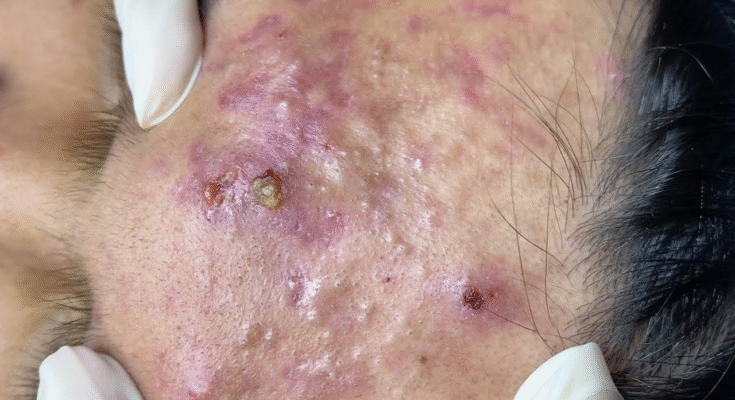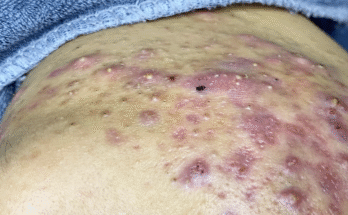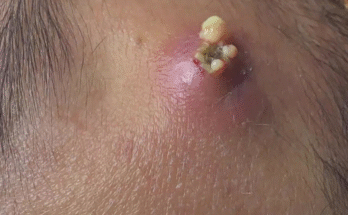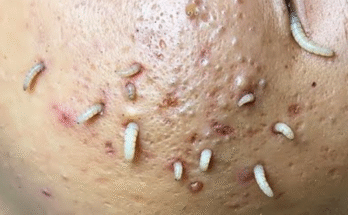Popping a pimple is never ideal, but sometimes it happens—whether by accident, impulse, or simply because you felt desperate to get rid of it. Once the pimple has been popped, what you do immediately afterward can make the difference between smooth healing and long-lasting scars or dark marks. A freshly popped pimple is essentially an open wound, which means it needs proper care, gentle treatment, and the right products to prevent infection, reduce inflammation, and support healthy recovery.
This guide walks you through the best ways to treat a freshly popped pimple, along with important do’s and don’ts to protect your skin and reduce long-term damage.
1. Wash Your Hands Before Touching Your Skin
The moment a pimple pops, bacteria from your fingers can easily enter the open pore. Before you do anything else, wash your hands thoroughly with soap and water.
Clean hands help prevent:
-
Infection
-
Increased inflammation
-
Additional contamination
Touch the area only as needed—and as gently as possible.
2. Cleanse the Area Immediately and Gently
A popped pimple usually leaks a small amount of fluid, pus, or blood. This can irritate the surrounding skin if left uncleaned. Use a gentle, fragrance-free cleanser to wash the area.
Choose a cleanser that is:
-
Mild
-
Non-foaming or low-foam
-
Free of alcohol, scrubs, or harsh chemicals
Avoid exfoliating cleansers, as they can irritate the already open wound.
Pat dry with a clean tissue or soft towel. Never rub.
3. Use an Antiseptic or Antibacterial Treatment
A popped pimple is vulnerable to infection, so the next step is to disinfect the area. This prevents bacteria from entering the pore and helps reduce redness.
Effective options include:
-
Benzoyl peroxide (2.5%)
-
Tea tree oil (diluted or a ready-made gel)
-
Hydrogen peroxide (use sparingly)
-
Witch hazel (alcohol-free)
If using benzoyl peroxide, apply only a thin layer—it can be strong on freshly broken skin.
4. Apply a Soothing, Anti-Inflammatory Treatment
Once disinfected, calm the area using ingredients that reduce redness and irritation.
Good options include:
-
Aloe vera gel
-
Niacinamide serum
-
Centella asiatica (CICA)
-
Green tea extract
-
Chamomile gel
These ingredients help reduce swelling and prevent the area from becoming overly red or irritated.
5. Never Try to Re-Squeeze the Pimple
After popping, many people feel tempted to squeeze again to “make sure it’s empty.” This is one of the most damaging actions you can take.
Re-squeezing causes:
-
More inflammation
-
A higher risk of scarring
-
Subsurface ruptures
-
Longer healing times
Once it’s popped, leave it alone. More pressure only worsens the injury.
6. Apply a Hydrocolloid Pimple Patch
Hydrocolloid patches are one of the best ways to protect a freshly popped pimple. They act as a bandage, speeding up healing while preventing further irritation.
Benefits of pimple patches:
-
Absorb excess fluid
-
Protect from bacteria
-
Prevent scratching or picking
-
Reduce redness
-
Create a moist healing environment
Apply the patch after drying the skin and leave it on for 6–12 hours or overnight.
7. Avoid Makeup for the First 12–24 Hours
When a pimple is freshly popped, applying makeup over the wound can clog the pore again and cause irritation or infection. Foundation, concealer, and powder can all trap bacteria and slow healing.
If you must wear makeup:
-
Use a hydrocolloid patch underneath
-
Choose non-comedogenic products
-
Avoid heavy, long-wear formulas
But ideally, let your skin breathe.
8. Keep Your Hands Off the Area
Touching the pimple again introduces bacteria and disrupts healing. Even light touching can worsen redness and cause the wound to reopen.
Try not to:
-
Scratch
-
Pick
-
Press
-
Peel scabs
Hands off means faster healing and fewer marks.
9. Apply a Healing Ointment to Support Recovery
A popped pimple heals best when the skin stays moisturized, not dry or crusty. A thin layer of healing ointment helps repair the skin barrier.
Great options include:
-
Vaseline
-
Aquaphor
-
CICA balm
-
Ceramide creams
These products lock in moisture and create a protective layer that encourages faster healing.
10. Use Spot Treatments for Dark Spot Prevention
Once the wound begins to close (usually after 24–48 hours), you can start using ingredients that prevent hyperpigmentation—the dark marks that often follow popped pimples.
Recommended products:
-
Niacinamide
-
Azelaic acid
-
Vitamin C (gentle formulas)
-
Licorice root extract
Do not use strong chemical exfoliants or retinoids until the skin is no longer broken.
11. Avoid Harsh Products During the First 48 Hours
Freshly popped pimples are extremely sensitive. Avoid ingredients that can sting or irritate, such as:
-
Retinoids
-
AHAs/BHAs
-
Scrubs
-
Alcohol-based toners
-
Perfumed products
Stick to soothing and lightweight products instead.
12. Don’t Pick at the Scab When It Forms
A scab is the skin’s natural bandage. Many people peel it off too early, which reopens the wound and increases the risk of scarring.
Let the scab:
-
Form
-
Stay
-
Fall off naturally
This ensures the skin underneath heals smoothly.



